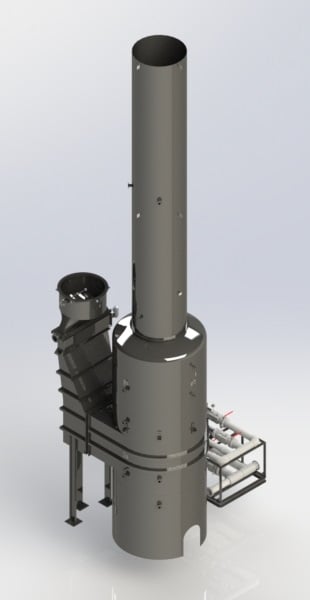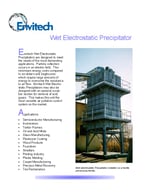Mineral Wool and Glass Fiber Production
Glass fiber manufacturing includes both textile and wool fibers. Both fiber types are manufactured by similar processes which use high temperatures to convert raw materials into glass fibers. Wool fibers can be segmented into two categories, wool fiberglass and mineral wool fiberglass. Wool fiberglass products are mostly residential building and pipe insulation. Mineral wool fiberglass is generally used for high density building insulation, fire proofing, or noise attenuation. Textile glass fibers are used as a reinforcing agent for many polymer products to form a strong, lightweight material called fiber reinforced polymer or plastic.
Emissions control is needed for both glass melting and fiber forming and finishing processes. The particle size distribution (PSD) can vary considerably between plants and process conditions. In some cases a low pressure drop Venturi is sufficient to meet outlet emission limits. In other cases, the concentration of submicron particulate may require wet electrostatic precipitators (WESP). Packed bed absorbers may be required to meet limits for methanol, phenol, formaldehyde and acid gas emission limits.
NESHAP MACT Standard:
- Wool Fiberglass Manufacturing, Subpart, NNN
- Mineral Wool Production, Subpart DDD
Exhaust Sources:
- Gas Fired Glass Furnace
- Electric Arc Furnace
- Cupola
- Blow Chamber
- Curing Oven
- Cooling Compartment
Pollutants:
- Particulates
- Sub-micron aerosol
- Formaldehyde
- Phenol
- Methanol
- Acid gases: HF, HCl
Equipment:





